Last post I shared my wonderment about Good Friday and why it’s not called Black. Since then Easter has come and gone, but is it really ever gone? By coincidence (if one believes such really exist) I was recently commissioned by a friend, Chuck Smith, to paint a rendition of the Road to Emmaus story. It would be for his church.
Do you remember it? It’s part of the Easter story, happening the night of the resurrection. Two men who’d followed Jesus were leaving Jerusalem where all the bad stuff had happened, heading for the town of Emmaus, seven miles distant. Jesus joined them, keeping himself from being identified, and asked what they were talking about. Before long, still without revealing himself, he was telling them the whole story of how all this had fulfilled many prophesies and that it had to happen that way.
By the time they get to Emmaus Jesus acts like he’s continuing on, but they convince him to stay for dinner. He does. When he gives thanks and breaks bread their eyes are opened, they see who he is, and at that second he disappears. They, overcome with wonder, rush back to Jerusalem to tell the others, confirming that indeed he was alive, resurrected from the dead.
It’s a beautiful story, and I was happy to take the painting on, but what aspect? I did a search of how other artists have approached it over time. I’ll share here part of what I found, and at the bottom, how I did it.
Here’s an icon painting of the Orthodox tradition, more symbolism than anything. Note the fish on the table. There’s nothing in the story about that, but later in the evening, back in Jerusalem when Jesus revealed himself to the eleven disciples, he asked for a fish to eat as proof he was not a ghost.
The account by the prolific, 13th century painter, Duccio di Broninsegna. Being pre-renaissance, he didn’t have the rules of perspective worked out yet. Depicted is the moment of arrival at Emmaus, the two were inviting Jesus to tarry.
Here’s a more familiar take by Swiss artist, Robert Zund, painted around 1900. It’s a fine piece of composition and story telling.
This is Friend of the Humble, by French painter, Léon Augustin Lhermitte, in the mid-1800s. Though he had access to all the colors of the pre-impressionists, he chose monochrome for the evening-lit room. At this moment, having broken the bread, the eyes of the disciples are opened. Note the wait staff has little idea what’s happening.
The dramatic renaissance artist, Caravaggio, painted the scene more than once. Anne and I saw his work in person while in Italy. Majestic, incredibly real, full of action and drama. Here the climax of the story is just moments away.
Here’s Rembrandt’s take, an artist who painted a great many Biblical images. Note the extreme dark to light to dark again, and the power of the expression as the diner recognizes who he’s been listening to, a split second before, poof, he’s gone.
There were more I researched, and more I’ve found since. In the end, after consultation with friend Chuck, I went with the moment of arrival at Emmaus, when Jesus was about to take his leave but was coaxed to stay. There’s meaning in it for all of us. The Lord has plenty to offer, but won’t push himself on us. Still, at our request he will stay, and dine. Left is a detail of the di Broninsegna piece shown at the beginning of this little art history overview. (Double click for larger view.)
Emmaus Road, oil over acrylic, 67×47.
Here’s to give an idea of the scale as I shared the finished work at a friend’s house before delivery. Hope you’ve enjoyed this little overview. It’s a painting to keep the story alive. In a sense, it’s always Easter.
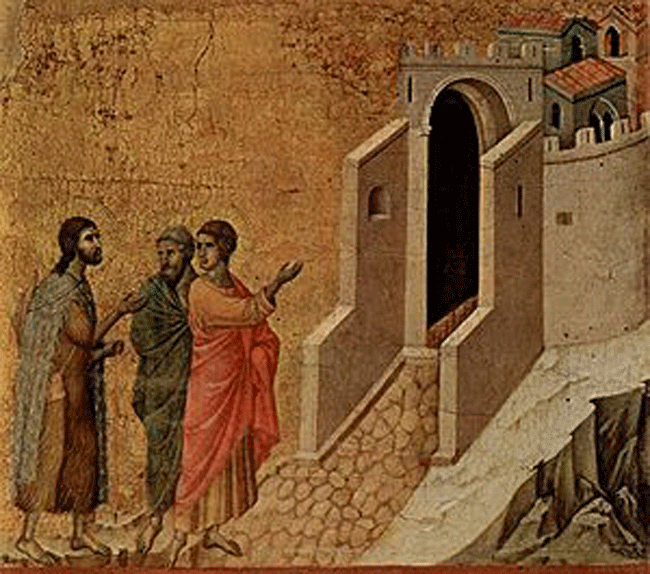
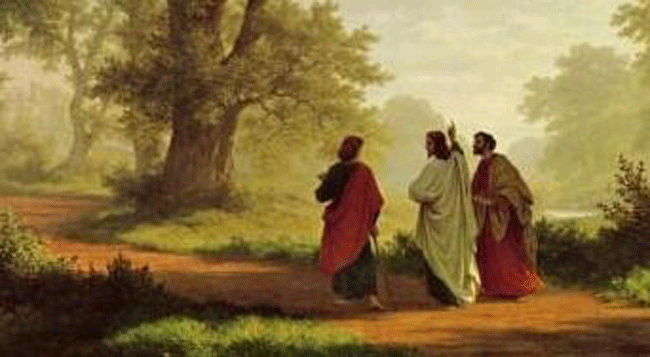
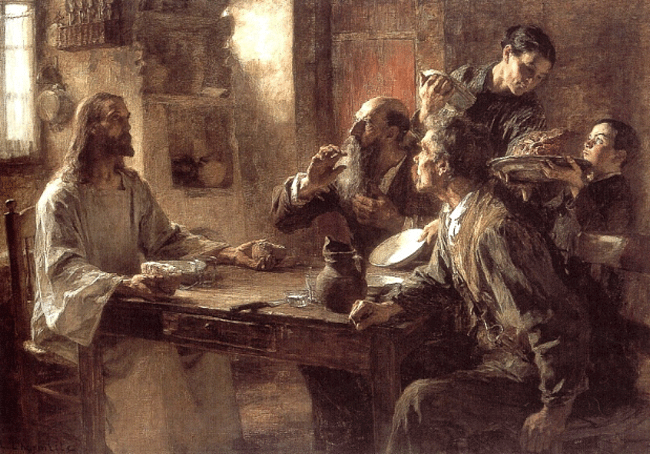
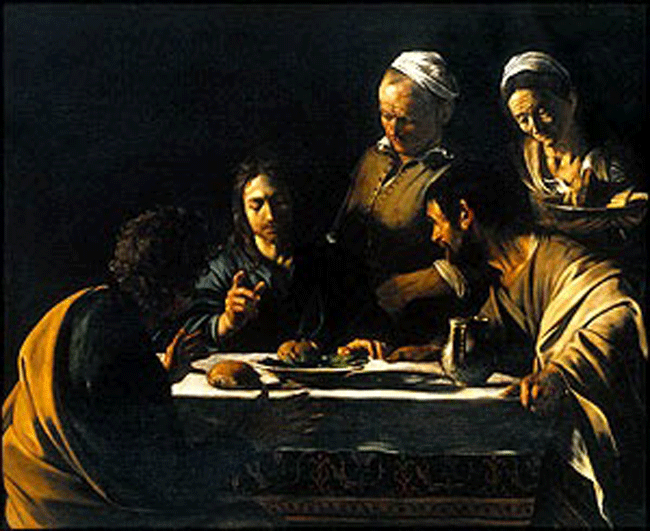
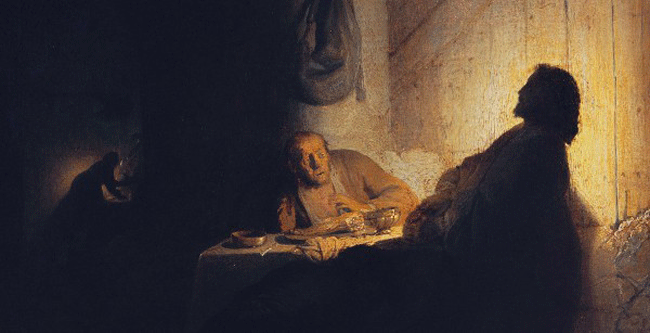
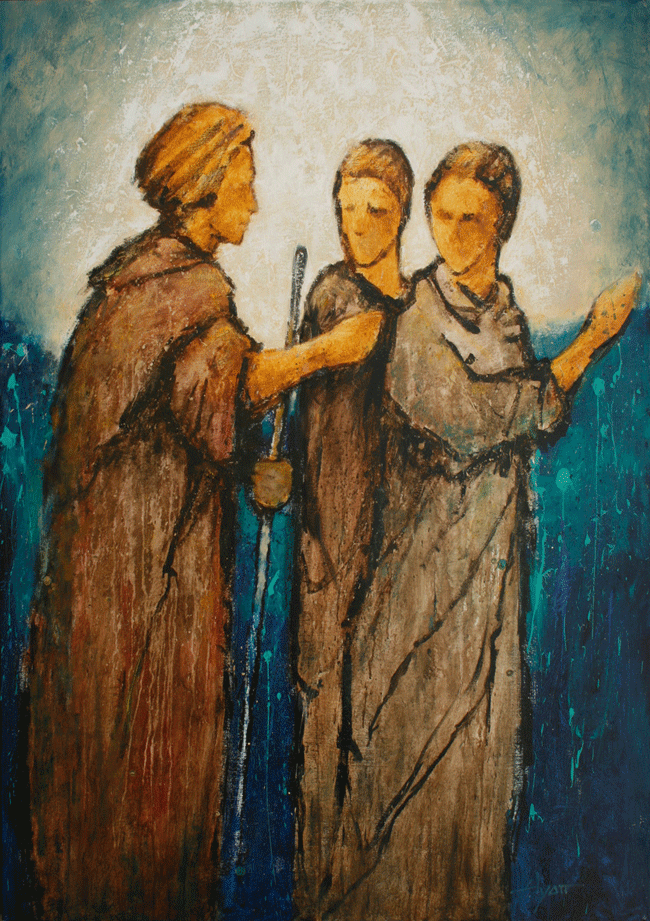
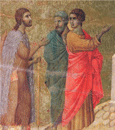
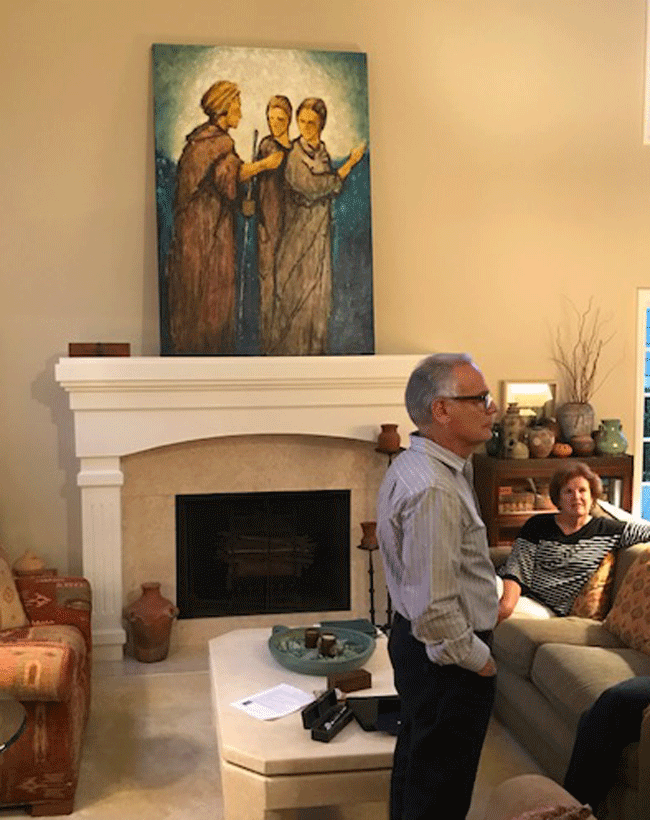

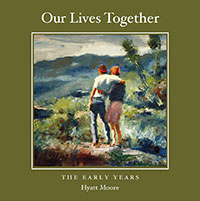 Our Lives Together
Our Lives Together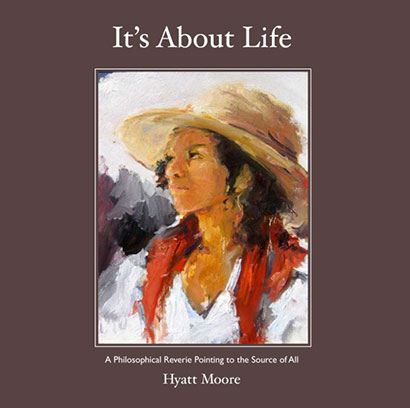 Its About Life
Its About Life
1:49 pm
Good to hear from you. It’s been great to follow a bit of your career. It has been a long time since South Bay Baptist!
2:42 pm
This story stirs me every time I visit it, this being no exception, Hyatt. What a lesson on the different artists’ perspectives! Love the “moment of arrival” portrayal you’ve passed on to Chuck. I know it’s a passage dear to his heart as well.
2:52 pm
I preached on this account on Easter and your blogpost only heightens my appreciation. Thank you.
3:18 pm
Doug, Great coincidence (there’s that word again); I preached on it last week too.
3:29 pm
Interesting that Caravaggio was inspired by this passage in Luke! I wonder whether Caravaggio hoped we might begin to understand his gifts and his passion better after he too had disappeared.
4:46 pm
Hyatt- like all of your blogs, this serves both to inform and inspire. Blessings, Rob